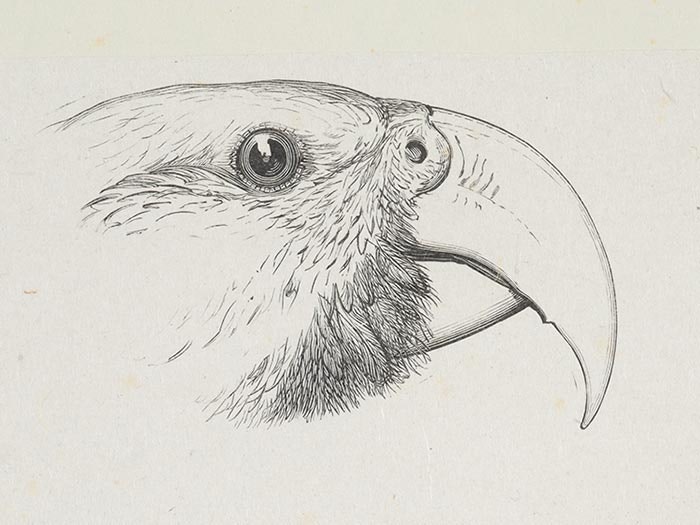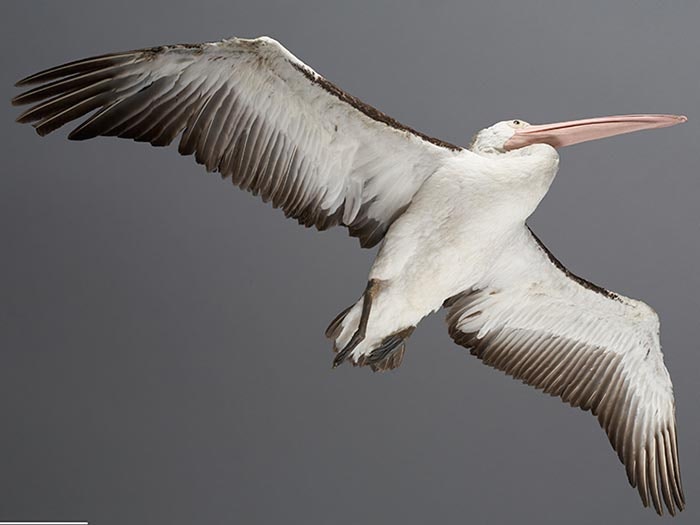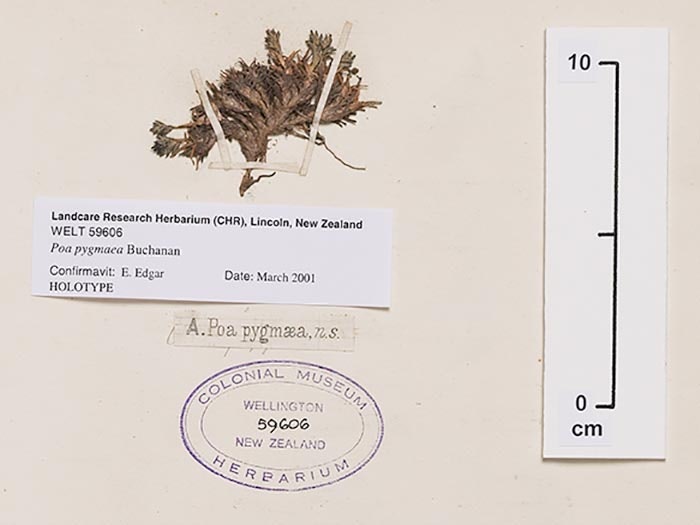
Tuhinga 13, 2002
EAN: 11734337
A rich Pleistocene-Holocene avifaunal sequence from Te Waka #1: terrestrial fossil vertebrate faunas from inland Hawke’s Bay, North Island, New Zealand. Part 2.
Trevor H. Worthy, Richard J. Holdaway, Brent V. Alloway, Jenny Jones, Jeanette Winn, and Deborah Turner
ABSTRACT: The results of 13 m2 of new excavations in the rock shelter called Te Waka #1, 900 m above sea level in inland Hawke’s Bay, North Island, New Zealand, are presented. The site is shown to have an unparalleled continuous faunal record in sediments about 3 m deep that spans the period from the Kawakawa eruption 22 600 14C yrs BP to the present. Good temporal control is afforded by clear stratigraphy, three obvious tephras (Taupo Ignimbrite, one unidentified, Kawakawa Tephra (Oruanui Ignimbrite)), seven AMS radiocarbon ages, and one uranium-series age. Three frog species, a tuatara, five lizards, 42 birds, and three bats are represented in the 2490 identified bones from the combined faunas from W. H. Hartree’s late 1950s and our 1999-2000 excavations. The fauna is interpreted as being mainly derived from the prey remains of Falco novaseelandiae, it includes the first fossil records of Garrodia nereis and Charadrius bicinctus from the North Island. The presence in the fossil avifauna of species that live only in shrubland or forest indicates that such vegetation was present on Te Waka between 22 000 14C yrs BP and the Late Glacial Maximum (LGM, 18 000 14C yrs BP). Pterodroma cookii ceased to breed on Te Waka over the LGM. The absence of this species (which nests solely under forest), the lack of forest passerines, and the presence of species characteristic of open vegetation indicate a substantial loss of vegetation around the site at that time. The sedimentary and faunal record indicate that the area was reafforested about14 000 14C yrs BP.
A rich Pleistocene-Holocene avifaunal sequence from Te Waka #1: terrestrial fossil vertebrate faunas from inland Hawke’s Bay, North Island, New Zealand. Part 2 (4.07 MB)
New fossil records of pelicans (Aves: Pelicanidae) from New Zealand
B.J. Gill and A.J.D. Tennyson
ABSTRACT: A cervical vertebra and a mandibular found 68 years apart in Late Holocene sand dunes at Tokerau Beach, Northland, and a left fibula from an archaeological site at Paremata near Wellington belong to a species of pelican (Pelecanus sp.) and are new geographic records for pelicans in the New Zealand fossil avifauna. These bones represent at least the ninth and tenth individual pelicans from New Zealand fossil and archaeological sites, and the seventh and eighth from the North Island. Previous records from New Zealand are reviewed. Many pelican bones from New Zealand, including the new finds, seem to be within the size-range of Australian bones of Pelecanus conspicillatus. While it is possible that pelican remains in New Zealand represent an endemic form (P. novazealandiae), it is more probable that they represent stragglers of P. conspicillatus from Australia.
New fossil records of pelicans (Aves: Pelicanidae) from New Zealand (642.68 KB)
The grasses John Buchanan illustrated in The Indigenous Grasses of New Zealand (1878-1880)
H. E. Connor and E. Edgar
ABSTRACT: Modern names are given to the numbered specimens of the grasses that John Buchanan (1819-1898) used for the nature-printed illustrations in The Indigenous Grasses of New Zealand (published between 1878 and 1880). The specimens are mounted in a guard book with the original drawings of the dissections; the collection is deposited in the Herbarium of the Museum of New Zealand (WELT). Fifty endemic, 18 indigenous, and 9 naturalised species were illustrated, some of them under two names.
The Imperial Quarto edition, with 64 plates, and the smaller Royal Octavo edition met the practical agricultural needs of colonists for access to information on native grasses, but over-dramatized their possible future utilisation.
The grasses John Buchannan illustrated in The Indigenous Grasses of New Zealand (1878-1880) (3.08 MB)
John Buchanan F.L.S. botanist and artist (1819–1898)
Nancy M. Adams
ABSTRACT: John Buchanan (1819–1898) was employed by, or associated with, some of the first organisations that provided an administrative or scientific framework in the colony – the Reconnaissance and Triangulation Surveys of Otago, the Otago Provincial Geological Survey, the Colonial Museum and Geological Survey of New Zealand, Colonial Botanic Garden, and the New Zealand Institute. Buchanan’s contribution to each of these organisations has been widely acknowledged, but apart from his published work and a few of his drawings and paintings, the details of his life and work remain unchronicled. A chronicological account of Buchanan’s life and work are presented as well as documentation about the fate of Buchanan’s botanical collections.
John Buchanan F.L.S. botanist and artist (1819–1898) (5.76 MB)
Marine macroalgae of Fiordland, New Zealand
W.A. Nelson, E. Villouta, K.F. Neill, G.C. Williams, N.M, Adams, and R. Silvsgaard
ABSTRACT: The Fiordland region covers an important part of New Zealand’s South Island. The fourteen fiords included within the region are separated by sections of exposed coastline. High rainfalls are characteristic of the region, and the high freshwater input into the fiords creates as salinity gradient both with depth and from the outer to inner fiords. The high tannin content of the run-off water changes the colour of the seawater, contributing to a unique marine environment.
Observations carried out during collection and survey trips suggest a decline in biomass and species diversity from the outer coast to the inner sections of the fiords. Early European explorers in Fiordland collected some of the first marine algae described from New Zealand. Subsequently, there have been very few macroalgal collections made until the last 20 years. The species list reported here presents records of macroalgae from Milford Sound to Puysegur Point, and is compiled primarily from specimens housed in the herbarium of the Museum of New Zealand Te Papa Tongarewa (WELT). Collections held by the Department of Conservation in Wellington and the University of Copenhagen in Denmark are also cited. Relationships of the algae of Fiordland to the floras of the West Coast of the South Island north of Fiordland and to Stewart Island are discussed, and future areas of endeavour are suggested. Three adventive algae have been recorded from the area, species that were probably introduced through whaling and sealing operations in the late 18th and early 19th centuries.
Marine macroalgae of Fiordland, New Zealand (3.75 MB)

